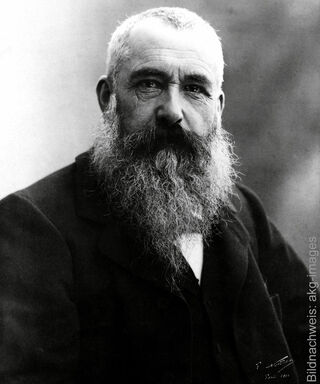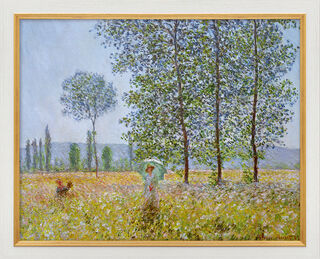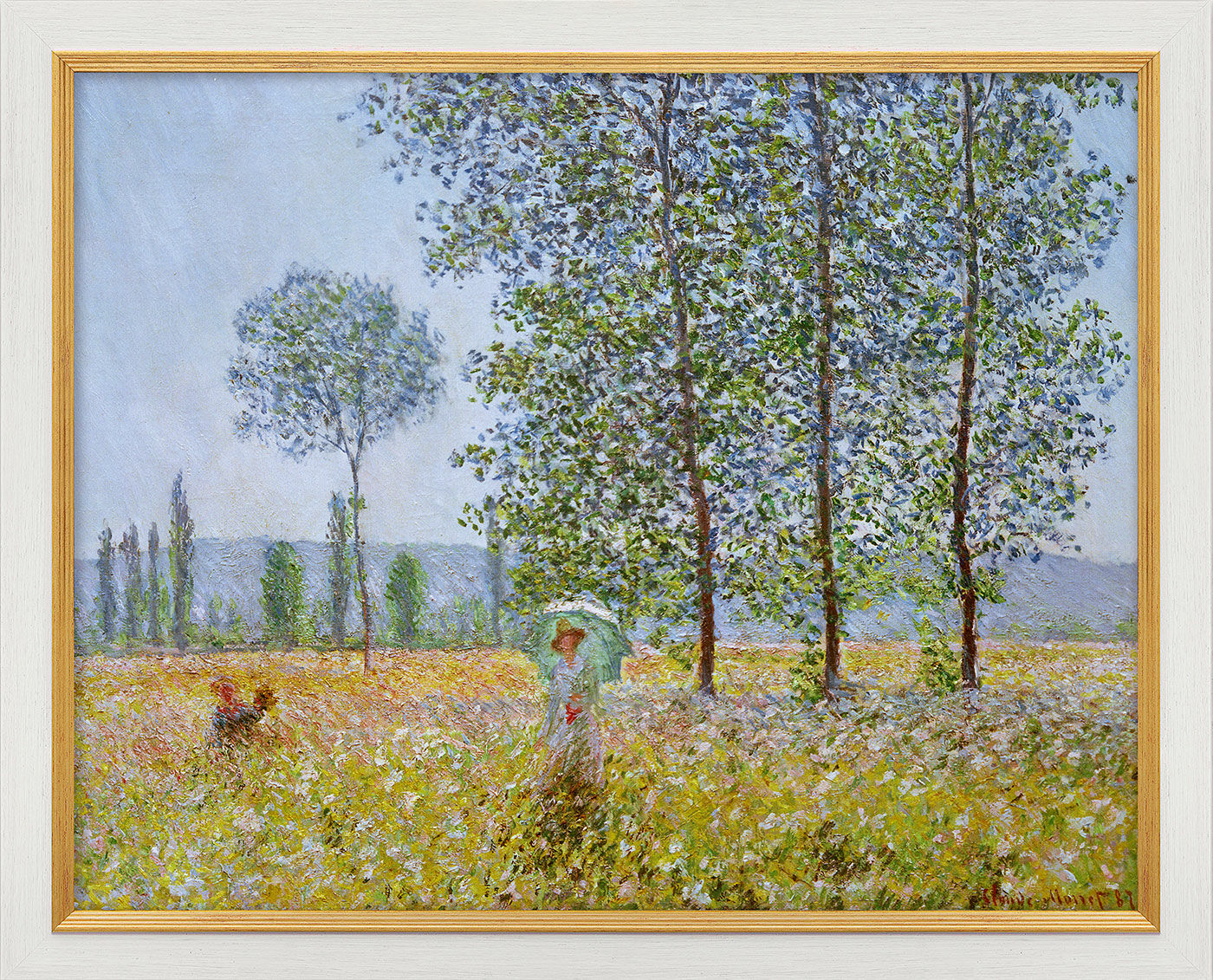Picture "Fields in Spring" (1887), framed


Picture "Fields in Spring" (1887), framed
Quick info
ars mundi Exclusive Edition | limited, 980 copies | certificate | reproduction, Giclée print on canvas | on stretcher frame | framed | size 63 x 78 cm (h/w)
Detailed description
Picture "Fields in Spring" (1887), framed
The painting is a masterpiece of impressionist painting. The work of art appeared at the Stuttgart gallery in 1906 and can be seen as the starting point for the important collection of modern art. Monet's artistic credo was to represent the immaterial, pure light by depicting its effect on visible things. The interaction of thousands of strokes of pure colour creates the composition and conveys the impression of a spring landscape flooded with light. By freeing his painting from narrative elements, Monet concentrated the viewer's gaze on the phenomenon of his then-revolutionary view of art.
Original: Oil on canvas, Staatsgalerie Stuttgart.
For a brilliant, authentic reproduction, the original artwork was printed directly onto canvas using the Fine Art Giclée process and Mounted on a stretcher frame. Limited edition of 980 copies, with certificate. Framed in white and gold solid wood bars. Size 63 x 78 cm (h/w). ars mundi Exclusive Edition.
Frame configurator
Customised picture frame

Frame configurator
Customised picture frame







About Claude Monet
1840-1926
The art of Claude Monet is the epitome of Impressionism. During his long life as a painter, he was tirelessly searching for new ways to depict the variability of light and colour in many various atmospheric variations and at different times of the day.
Monet was born in Paris, but grew up in Le Havre, on the Normandy coast, where his father ran a small grocery shop. He made his early artistic attempts with caricatures but then switched to open-air painting. Light pastel tones found their way onto his canvases. His paintings were repeatedly rejected by the official Paris Salon, but Monet and his friends Auguste Renoir and Alfred Sisley were not discouraged. On their joint excursions to Fontainebleau, they created magnificent fresh paintings in the open air that left the strict academic rules further and further behind.
However, severe financial crises hit Monet and his pregnant beloved Camille. During the Franco-Prussian War, Monet fled to London with his young family. After the war, they settled in Argenteuil. This small town outside Paris, picturesquely situated along the Seine, became the centre of attraction for a whole series of Impressionist painters: Edouard Manet, Gustave Caillebotte, Camille Pissarro, Auguste Renoir and Alfred Sisley met there to capture their impressions on canvas. In the group's first independent exhibition, a painting by Monet entitled "Impression. Sunrise" gave the art movement its name.
After Camille's death, Monet moved to Giverny with his second wife Alice. Here he was able to realise his lifelong dream of having his own garden, designed by himself: The flowering garden with its Japanese bridges and ponds full of water lilies inspired Monet constantly to create new, ever larger paintings showing the changing plant life as an overwhelming decorative harmony of nature.
This estate, which was bequeathed by Monet's son to the Academié des Beaux-Art in 1966 and is open to the public through the "Claude Monet Foundation" since 1980, was an inexhaustible source of inspiration for him. Today, the garden in Giverny is a destination valued many art lovers. Anyone who visits it feels immediately transported into the artist's pictorial world. In spring, colourful blossoms are all over the place, and while looking at the real water lily ponds that Monet painted over and over again, visitors are amazed at how precisely he captured the scenery, despite all his artistic idiosyncrasies. "On my garden I work continuously and with love, most of all I need flowers, always, always. My heart is always in Giverny. A separation from Giverny would hit me hard ... never again would I find such a beautiful place." And he never had to separate with his garden; Monet died in his beloved Giverny on 5 December 1926.
Monet has been called the inventor of colourful dreams beyond the visible. But he was much more, always seeking to realise his idea of painting in the open air - en plein air. For his painting, the decisive factor was always how he sees, not what he sees.
Graphic or sculpture edition that was initiated by ars mundi and is available only at ars mundi or at distribution partners licensed by ars mundi.
Giclée = derived from the French verb gicler "to squirt, spurt".
The giclée method is a digital printing process. It is a high-resolution, large-format printout on an inkjet printer with special different-coloured dye- or pigment-based inks (usually six to twelve). The colours are fade-proof, i.e. resistant to harmful UV light. They have a high richness of nuance, contrast and saturation.
The giclée process is suitable for art canvases, handmade and watercolour paper as well as for silk.






